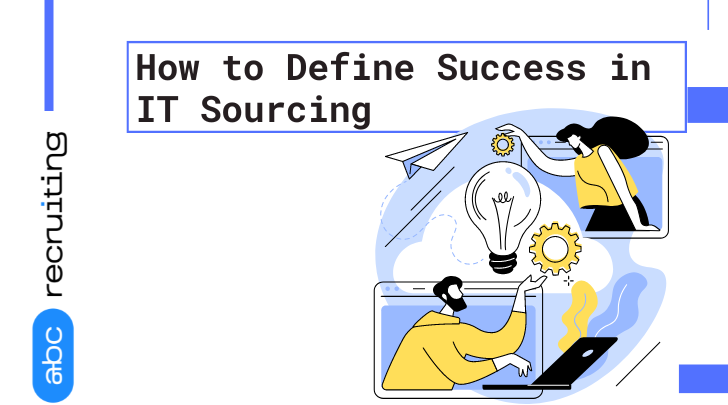How do you define success in IT sourcing and know that you're getting value from your providers? It's all about setting the right metrics and key performance indicators (KPIs) to track. Without the proper measurement strategy, you're flying blind and leaving too much to chance. But get the metrics right, and you'll gain complete visibility into how your providers are performing, areas that need improvement, and whether outsourcing is achieving your goals. In this article, we'll explore the metrics that really matter for measuring success in IT sourcing so you can gain confidence that your critical IT operations are in good hands.
Key Performance Indicators (KPIs) for IT Sourcing
When it comes to measuring the success of your IT sourcing efforts, there are a few key performance indicators (KPIs) you'll want to track.
First, keep an eye on cost savings. This typically includes reductions in operating and labor expenses. Are you paying less for IT infrastructure, software licenses, and resources? If so, your sourcing strategy is likely paying off.
You'll also want to monitor service quality. Things like system uptime/availability, response times, and end-user satisfaction are good indicators of how well your sourced IT solutions are performing. Conduct regular audits and surveys to identify any dips in quality.
Staff Retention
Staff retention is another important metric. If turnover is high, it may signal issues with your sourcing model that are impacting employee satisfaction and engagement. Not only does high turnover reduce productivity, but it also increases costs associated with hiring and training new staff.
Lastly, keep tabs on business impact. The ultimate goal of any IT sourcing effort is to positively impact the business. Look at things like revenue growth, product innovation, improved decision making, and overall agility. Your sourced IT solutions should be moving these kinds of business metrics in the right direction.
By tracking cost savings, service quality, staff retention, and business impact, you'll get a well-rounded view of how successful your IT sourcing really is -- and make better strategic decisions as a result. Focusing on the KPIs that matter most will help ensure you're achieving the outcomes you set out for. With regular monitoring and course corrections, your sourcing strategy can thrive and scale to support your organization's needs.
Cost Savings and ROI
When it comes to measuring the success of your IT sourcing efforts, two metrics matter most: cost savings and return on investment (ROI).
Cost savings refer to the amount of money you're able to trim from your IT budget by outsourcing certain functions. Are you paying 30% less for help desk support? Saving 50% on software development? Tracking these concrete dollar figures is key.
ROI measures the overall financial benefit of your IT sourcing relative to what you're spending. For example, if you invested $200,000 in an outsourced project that ended up generating $500,000 in revenue, your ROI would be 150%.
To calculate your ROI:
- Determine your total IT sourcing costs for a project, including any upfront investments or ongoing fees.
- Estimate the financial value or impact of the project. This could be increased revenue, improved productivity, reduced risks, etc. Be as specific as possible.
- Divide the financial value by your total costs.
- Multiply by 100 to get a percentage.
The higher your cost savings and ROI, the more successful your IT sourcing efforts. Of course, don't forget about other key performance indicators (KPIs) like improved service levels, increased flexibility, and access to scarce skills. But when it comes to proving the business case, dollars and cents are what really matter.
Tracking cost and ROI regularly will help ensure your IT sourcing continues to drive significant and measurable value for your organization over the long run. Now isn't that the definition of true success?
Supplier Performance
A supplier's performance is critical to the success of any IT sourcing engagement. You'll want to closely monitor several key performance indicators (KPIs) to ensure your supplier is meeting expectations and service level agreements (SLAs).
Contract compliance
Are they delivering on what was promised in the contract? Track metrics like:
- On-time delivery of projects and key milestones
- Adherence to budget and cost commitments
- Compliance with security and compliance requirements
If the supplier is not meeting contractual obligations, it's important to address it right away.
Responsiveness
How quickly do they respond to issues and requests? Monitor:
- Average time to respond to a support ticket or question
- Average time to resolve priority issues
- Escalation of critical issues to appropriate levels of management
Poor responsiveness can significantly impact productivity and user experience. Establish clear SLAs for response and resolution times.
Quality of work
Review the quality, accuracy and completeness of the supplier's work product. Some metrics to consider include:
- Error or defect rates
- Client satisfaction scores
- Rework required
- Compliance with standards and best practices
Innovation
A strong supplier should continuously improve services and make recommendations to optimize the engagement. Look for signs they are:
- Introducing new technologies, tools or processes to increase efficiency or quality
- Recommending ways to refine the scope of services to better suit changing needs
- Providing thought leadership through ongoing reports, briefings and best practices
Closely monitoring supplier performance and addressing any issues is the only way to ensure maximum value and success from your IT sourcing ventures. Keep an open line of communication and work with your supplier to improve results over the long run.
Quality of IT Talent
When it comes to IT sourcing, the quality of talent is crucial. After all, you’re relying on these individuals and teams to get the job done right. Some key metrics to track the caliber of your IT talent include:
Retention and Turnover
High turnover means you’re frequently having to recruit and onboard new talent, which reduces productivity and efficiency. Aim for IT talent retention rates of at least 85-90%. Track turnover rates for different roles and teams to identify any issues.
Skills and Experience
Make sure the talent you source, whether employees, contractors or outsourced teams, have the technical skills and experience to perform the required work. This could include certifications, years of experience, expertise with key technologies, languages, and systems. Conduct skills assessments to validate capabilities.
Productivity and Output
Measure the output and productivity of your IT talent through metrics like:
- Number of projects/tasks completed
- Code commits/check-ins
- Bugs/errors fixed
- Features implemented
- SLAs or KPIs met
Compare productivity metrics over time and between teams/individuals to determine if you’re getting maximum value from your talent. Make adjustments as needed to workloads or team structures.
Satisfaction
Survey your IT talent regularly to gage satisfaction levels. Talent that is highly satisfied will perform better and stay longer. Measure satisfaction with factors such as:
- Compensation and benefits
- Work-life balance
- Career growth opportunities
- Management and company culture
- Work environment
Addressing any issues around satisfaction and making improvements will help you attract and retain the best IT talent. By closely monitoring these metrics, you can ensure you’re sourcing high-quality technology talent to drive success. Making data-driven decisions around your talent strategy is key.
Business Satisfaction and Alignment
When determining if your IT sourcing strategy is achieving the desired results, don’t just look at cost savings and service metrics. Business satisfaction and alignment are equally important key performance indicators (KPIs) to track.
Executive Buy-In
Do executives fully support the IT sourcing approach and understand the benefits? Their buy-in is essential to success. Regularly communicate key milestones, wins, and lessons learned. Be transparent about challenges and risks, and work together on solutions.
Business Unit Satisfaction
The groups directly supported by outsourced services must be satisfied with the results. Survey business units on quality, responsiveness, and value. Look for opportunities to strengthen the working relationship between outsourced teams and internal groups. Dissatisfaction can undermine the benefits of your IT sourcing strategy.
Alignment with Business Goals
Outsourced services should align with and support key business objectives and priorities. Review how outsourcing impacts critical initiatives and make adjustments as needed. Discuss any misalignment of goals with service providers and work together on corrective actions.
Adoption of Best Practices
Is your organization adopting best practices introduced by service providers? New technologies, tools, and ways of working can drive significant benefits. Track the implementation and usage of recommendations from providers. Help address any obstacles to adopting best practices.
Measuring business satisfaction and strategic alignment, in addition to cost and service metrics, provides a holistic view of the success and value of your IT sourcing program. Make these KPIs a priority in your governance process to maximize the benefits of outsourcing.




